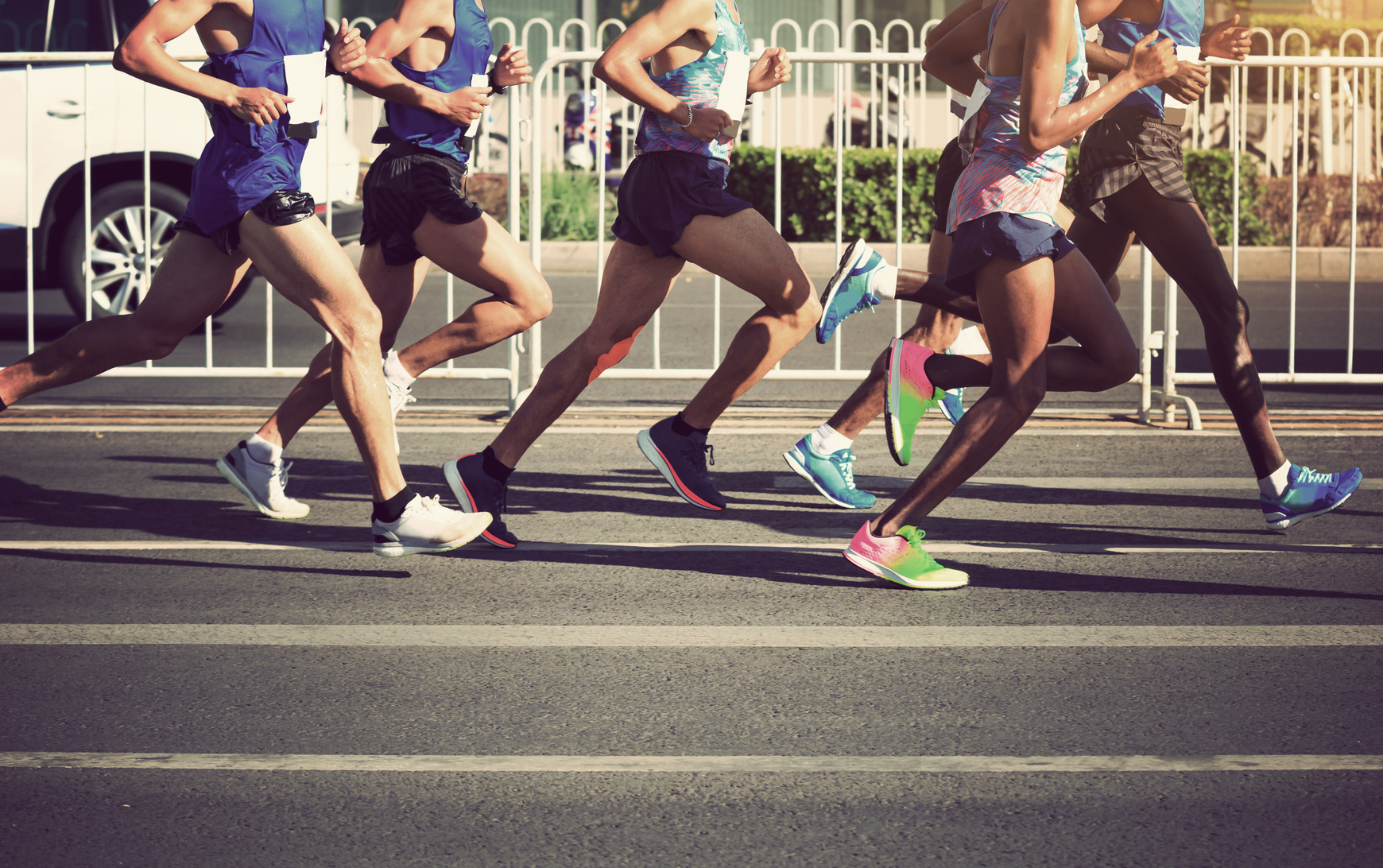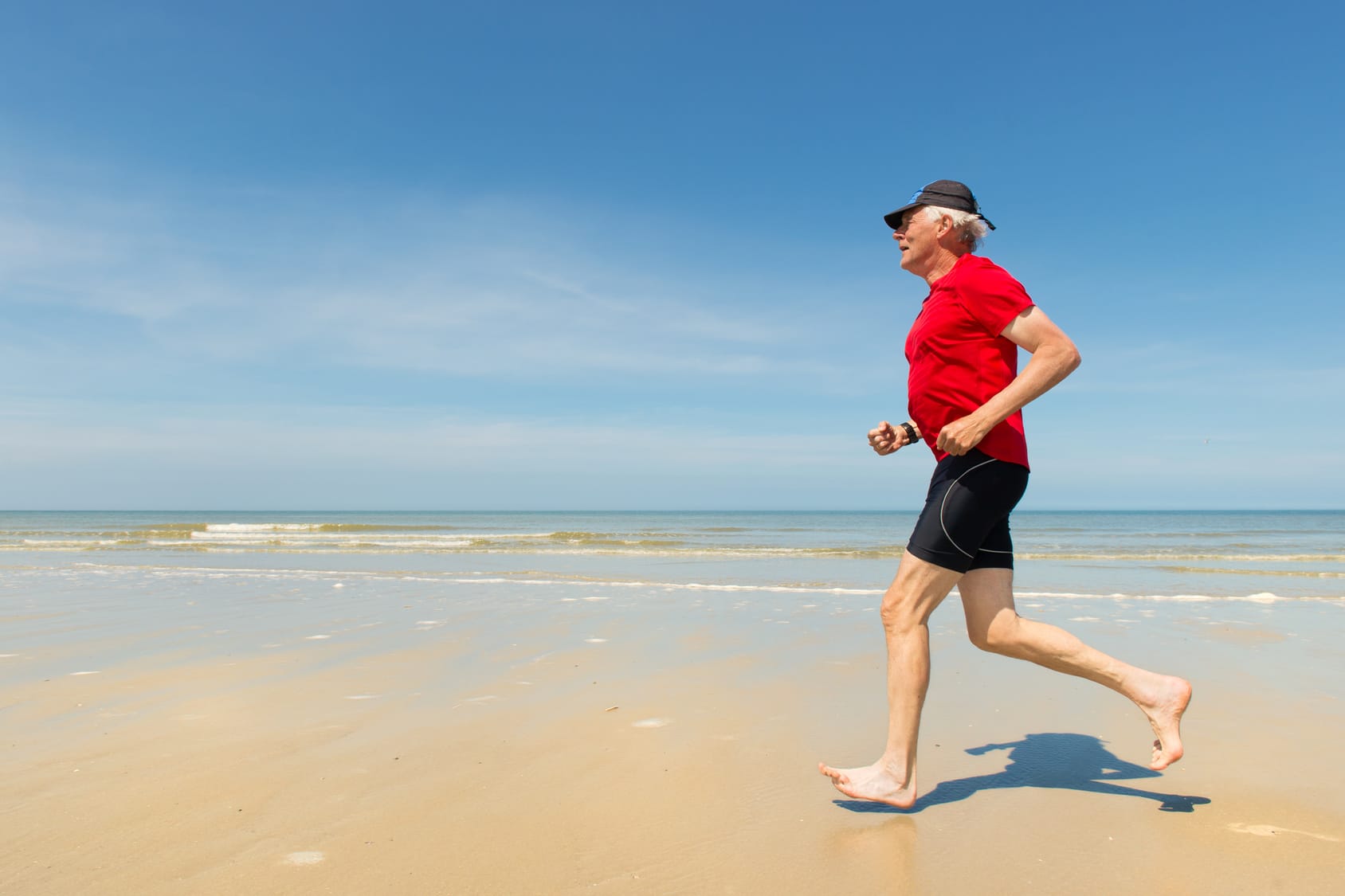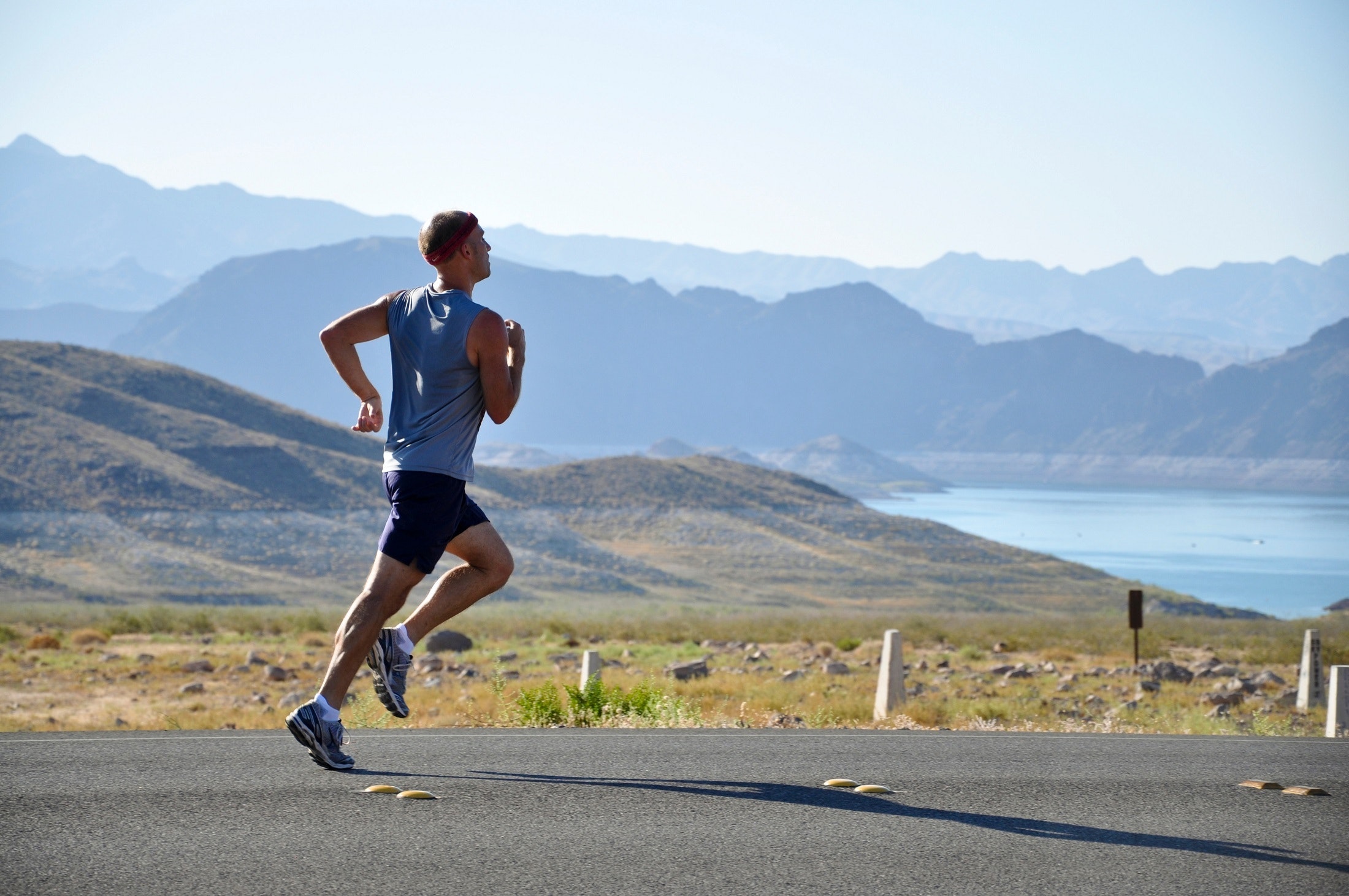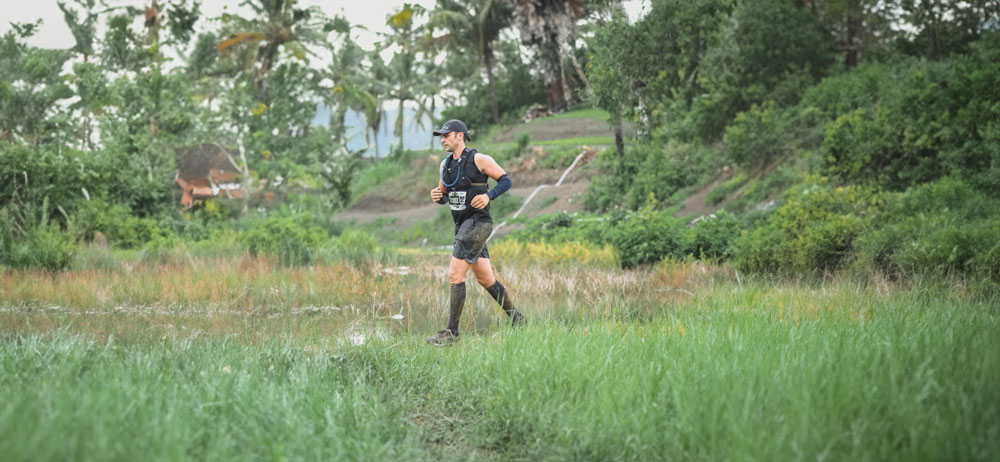If you’ve set your sights on earning a spot in this prestigious Boston Marathon race, then you’ve landed in the right spot.
Qualifying for Boston is no easy feat, but with dedication and hard work, it’s an accomplishment that countless runners strive for each year. Trust me, you’re not alone in this pursuit.
Now, let’s get one thing straight from the start: there are no shortcuts when it comes to Boston qualification. This is a goal that demands your commitment and determination. Many runners spend years chasing that elusive BQ (Boston Qualifier time), and even if you manage to run within the accepted time frame, it doesn’t guarantee you entry to the race (I’ll delve into that later).
But don’t worry, my friend. I’m here to guide you through the ins and outs of qualifying for Boston. In this article, we’re going to cover everything you need to know. I’ll talk about what the Boston Marathon is all about, how to actually qualify, the history of qualifying times, the latest requirements, the infamous cut-off times, and even take a peek at the fastest Boston Marathon times ever recorded.
By the time we’re done here, you’ll have a clear roadmap to guide you on your quest to conquer those hallowed Boston streets.
Are you ready? Let’s do this!
What is The Boston Marathon
Boston Marathon is the oldest, annual, continues-running marathon in the world.
Started in 1897 and inspired by the success of the first marathon at the 1896 Olympics in Athens, the Boston marathon is a bucket list race for many runners of all ages and training backgrounds.
The event attracts some of the most driven athletes worldwide committed to slug it through every mile and making it to the finish line.
Over 25,300 runners lined up in Hopkinton, MA, in 2022 and logged 26.2 miles of the famous course. Additionally, over 24,900 runners and wheelchair athletes crossed the finite line on Boylston Street.
That’s around a 98 percent finish rate.
What’s more?
The event also ranks as one of the world’s best road races. The Boston Marathon is one of the Six World Marathon Majors, including Chicago, New York, Tokyo, Berlin, and London.
Note – To learn more about the history of running, click here. And here’s the full guide to how long is a marathon.
The Conditions
The Boston Marathon is like no other, my friend, because it isn’t just a marathon anyone can enter. Oh no, to earn your spot in this prestigious event, you must first conquer the mighty beast known as the qualifying time.
You see, the Boston Athletic Association has set some rigorous standards that runners must meet to qualify. These standards are no joke. To secure your place among the elite, you must prove your mettle by achieving the required time in an accredited marathon. It’s a daunting challenge, but one that separates the wheat from the chaff, the true warriors from the casual joggers.
Now, you might be wondering, why does the Boston Marathon stand alone in its qualifying requirements? Well, my friend, that’s because it holds a special place in the heart of competitive racing. While most races around the world don’t have qualifying criteria, the Boston Marathon stands as an exception, joining the ranks of the Olympics and championship races. It’s a race that demands dedication, discipline, and a burning desire to push beyond your limits.
But why, you ask? Why the strict entry limits and ever-changing rules? Well it’s all about finding that delicate balance between preserving the race’s integrity and giving seasoned marathon veterans a chance to shine. The introduction of entry limits was a necessary step to control the field’s size, ensuring that the Boston Marathon remains a showcase of elite athleticism while still allowing those with experience and passion to participate.
And here’s the thing: these qualifying standards have evolved over time, adapting to the ever-changing landscape of marathon running. They’ve been tweaked and refined, ensuring that only the most deserving runners earn their rightful place on the starting line.
How to Qualify For the Boston Marathon
Well, my friend, get ready to dive headfirst into a world of precision and speed. To secure your spot in this prestigious race, you’ll need to unleash your inner road warrior and clock a race time that surpasses the Boston Marathon qualifying times set for your age group and gender.
Picture this: you’re standing at the starting line, heart pounding, adrenaline coursing through your veins. The race begins, and you’re off like a bolt of lightning, racing against the clock. Every step you take, every stride you make, brings you closer to that elusive qualifying time.
Now, let’s talk logistics. Those qualifying times are based on the official finish, my friend, known as the chip time or gun time. It’s the measure of your greatness, the definitive mark that determines whether you’ve earned your place among the Boston Marathon elite. But remember, it’s not just about being fast; it’s about being faster than the rest in your age group and gender.
Timing is everything in this game. You’ll need to strategize and plan ahead. Imagine the date: April 17, 2023. That’s when the 2023 Boston Marathon will take place, an event that will go down in history. But here’s the catch: your qualifying time must have been achieved after September 15, 2021. It’s like a time window, my friend, a narrow passage through which you must pass to prove your worthiness.
Oh, and mark your calendar because the Boston Marathon sign-up is no ordinary affair. In 2022, it spanned over five days, from September 12th to the 16th. It’s a frenzy of eager runners vying for their chance to be a part of this iconic race, like shoppers clamoring for the best deals on Black Friday.
Additional resource – Marathon pace chart
Running A BQ Doesn’t Guarantee Entry
Running a Boston Qualifier (BQ) is like unlocking the door to the grand ballroom of the Boston Marathon, but it doesn’t guarantee participation to the event. You see, the field size for this iconic race is limited, and only the swiftest of feet are granted entry. Achieving a qualifying time is just the first step towards Boston.
In recent years, the competition has become fiercer, and not every runner who achieved a qualifying time has received a golden ticket. But fear not, for there are ways to increase your chances and secure that coveted spot in the Boston Marathon.
To truly stand out in the crowd, you’ll need to go above and beyond. Running a few minutes faster than the qualifying time can be the key that unlocks the door to Boston. Think of it as adding an extra layer of brilliance to your performance, like a diamond sparkling in the sunlight.
Now, let’s dive into some numbers, my friend, to give you a glimpse into the fascinating world of the Boston Marathon field size and non-accepted qualifiers over the past decade. Take a look at the table below, and let the statistics paint a vivid picture:
Year Field Size Non-Accepted Qualifiers
2013 27,000 2,500
2014 36,000 4,500
2015 30,000 2,000
2016 30,000 3,000
2017 30,000 3,500
2018 30,000 4,000
2019 30,000 4,500
2020 31,500 4,000
2021 20,374 2,957
2022 25,300 3,400
These numbers tell a story of determination and dreams, my friend. They reveal the intense competition and the countless runners who, despite achieving their BQ, were left yearning for their moment in the spotlight.
But don’t let these figures discourage you. They should fuel your fire and motivate you to push harder, run faster, and make your performance shine brighter than ever before.
| Year | Field Size | Non-Accepted Qualifiers | ||
| 2012 | 27,000 | 3,228 | ||
| 2014 | 36,000 | 2,976 | ||
| 2015 | 30,000 | 1,947 | ||
| 2016 | 30,000 | 4,562 | ||
| 2017 | 30,000 | 2,957 | ||
| 2018 | 30,000 | 5,062 | ||
| 2019 | 30,000 | 7,248 | ||
| 2020 | 31,500 | 3,161 | ||
| 2021 | 20,000 | 9,215 | ||
Boston Qualifying Times – The Tables
The following table contains qualifying times used for the recent Boston marathon, which had been used since 2003. An extra 59 seconds is allotted for each standard.
| Age Group | Male | Female |
| 18-34 | 3hrs 00min 00sec | 3hrs 30min 00sec |
| 35-39 | 3hrs 05min 00sec | 3hrs 35min 00sec |
| 40-44 | 3hrs 10min 00sec | 3hrs 40min 00sec |
| 45-49 | 3hrs 20min 00sec | 3hrs 50min 00sec |
| 50-54 | 3hrs 25min 00sec | 3hrs 55min 00sec |
| 55-59 | 3hrs 35min 00sec | 4hrs 05min 00sec |
| 60-64 | 3hrs 50min 00sec | 4hrs 20min 00sec |
| 65-69 | 4hrs 05min 00sec | 4hrs 35min 00sec |
| 70-74 | 4hrs 20min 00sec | 4hrs 50min 00sec |
| 75-79 | 4hrs 35min 00sec | 5hrs 05min 00sec |
| 80 and over | 4hrs 50min 00sec | 5hrs 20min 00sec |
Have Faith
If you’re feeling a bit disheartened after glancing at those tables, fear not, for they only tell a small part of the story. Behind those numbers lie countless tales of runners who have risen to the challenge, defying the odds and conquering their marathon goals.
So, mark your calendars and set your sights on the 128th Boston Marathon, scheduled for April 15, 2024. The qualifying window opens its doors on September 1st, 2022, giving you plenty of time to lace up those running shoes and embark on your journey to greatness
Now, let’s talk qualifying times, my friend. The times listed below are based on your age on the date of the 2023 Boston Marathon, which will take place on April 17, 2023. It’s important to keep these times in mind as you push yourself towards your Boston dreams:
Age Group Qualifying Time (in hours)
18-34 3:00
35-39 3:05
40-44 3:10
45-49 3:20
50-54 3:25
55-59 3:35
60-64 3:50
65-69 4:05
70-74 4:20
75-79 4:35
80+ 4:50
But hey, don’t just take my word for it. Head over to the official Boston Marathon website for more information on qualifying times and conditions. There’s a wealth of knowledge waiting for you there, like a treasure trove of marathon wisdom just waiting to be discovered.
Additional resource – How to avoid slowing down during a race
How to Qualify For Boston
Looking to qualify for the Boston Marathon? Then you should know that you’ll have a lot of work ahead of you.
I won’t sugarcoat it—earning a spot in this legendary race is like navigating a treacherous but rewarding obstacle course.
Listen, I don’t mean to be repetitive, but let’s be real here. Qualifying for the Boston Marathon isn’t a walk in the park. It’s more like scaling a mighty mountain, step by grueling step. But don’t let that intimidate you. With the right mindset, dedication, and a pinch of stubbornness, you can conquer this challenge.
Be Realistic
Let’s start with a crucial tip that will be your compass throughout this demanding endeavor—be realistic.
Take an honest look at your current marathon performance. If your personal best is a considerable distance away from the qualifying time for Boston, it’s time to face the music. For instance, if your marathon PB stands at 4 hours and 20 minutes, and you need to shave off a whopping 70 minutes to qualify with a 3:10 time, it’s essential to set achievable goals.
Now, don’t get me wrong. I’m not saying it’s impossible to bridge that gap. But it’s crucial to understand that it won’t happen overnight. We’re talking about a journey that requires time, patience, and a willingness to push yourself to new heights. For many runners, a year of dedicated training might not be enough. The farther your current best time is from the qualifying standard, the more training and preparation you’ll need to do to bring your body up to speed.
In fact, most runners embark on a multi-year quest, honing their aerobic endurance and strengthening their bodies to meet the qualifying times in their respective age groups. Think of it as building a sturdy foundation, brick by brick, until you’ve constructed a fortress of stamina and speed.
I know, I’m starting to sound like a broken record, but it bears repeating—there are no shortcuts when it comes to qualifying for Boston. It’s all about putting in the hours, the sweat, and the determination to inch closer to your goal.
Additional resource – How to nail your sub 4 hour marathon pace
Run More Miles
If you’re determined to make your way into the hallowed grounds of the Boston Marathon, there’s one surefire method that stands head and shoulders above the rest—becoming a faster, stronger, and more resilient runner. And how do you achieve that? Well, it’s as simple (and challenging) as running more miles. Yes, my friend, practice truly does make perfect.
Now, I know you might be thinking, “Who are you to make such a bold claim?” Well, let me share with you some fascinating insights backed by data. A survey conducted by Strava, a renowned fitness network, delved into the habits of 30,000 marathon runners. And guess what? Out of that impressive cohort, a whopping 7,146 runners qualified for Boston, while the remaining 24,330 fell short of the mark.
So, what was the secret ingredient that set the successful runners apart from the rest? It all boiled down to the mileage they logged in the three months leading up to the big race. Brace yourself for this staggering statistic—Boston qualifiers ran almost twice as many miles as those who didn’t make the cut. It’s like they were traversing endless paths, paving their way to greatness with each and every stride.
But don’t just take my word for it; the numbers speak for themselves. In yet another enlightening survey, this time involving 125 Boston qualifiers, it was revealed that only a handful of runners managed to secure their spots by running on the lower end of the mileage spectrum. In fact, the vast majority of these marathon warriors covered over 1,000 miles in the 12 months leading up to their qualifying race. Talk about dedication and determination!
Additional Guide – What’s The Fastest Marathon Time?
Stick to An Easier Pace
When it comes to your training, my friend, one of the most important things to remember is the power of sticking to an easy pace. Going too fast, well, that’s a common pitfall that many runners stumble upon. And let me tell you, it can lead to a world of trouble. Overtraining or, even worse, injuries may be lurking just around the corner.
Here’s the truth. According to the Strava survey I mentioned earlier, not only did the Boston Marathon qualifiers log more miles, but they also knew the importance of embracing an easy pace.
In this study, it was uncovered that male athletes who qualified for Boston allocated a mere 15 percent of their mileage at the marathon pace.
On the other hand, those unfortunate non-qualifiers had their mileage dominated by a qualifying pace, accounting for a whopping 57 percent of their running regimen. It’s like they were sprinting towards a distant finish line, never realizing that the true victory lies in the balance.
And let me assure you, my friend, the results were no different for our fierce female athletes. They too embraced the wisdom of pacing themselves, allocating their mileage wisely to ensure that they had the strength and endurance to conquer the Boston Marathon.
Add Speed Work
Although running easy is key, you should add at least one speedwork session to your weekly training plan.
Again, don’t take my word for it. a survey conducted among Boston qualifiers uncovered a staggering statistic.
Can you believe it? A whopping 84 percent of these remarkable individuals emphasized the vital role of speedwork in their journey towards securing a spot in the prestigious race. It’s like they unlocked a hidden reservoir of untapped potential, harnessing the power of targeted workouts to propel themselves towards greatness.
Imagine this: your qualifying time for Boston stands at a respectable 3:10. Now, picture this: incorporating speedwork sessions into your training plan, specifically tailored to help you tackle those miles at your marathon race pace. It’s like fine-tuning the engine of a sports car, ensuring that every gear shift aligns perfectly with your desired outcome.
But wait, my friend, let me share a word of caution. As you embark on this speedwork adventure, remember to tread lightly and follow the sacred 80/20 rule. Let 20 percent of your miles be filled with the intensity of hard workouts, while the remaining 80 percent is a gentle dance of easy running, nurturing your body and allowing it to recover and strengthen.
Additional resource – Guide to Marathon Des Sables
Eat For Performance
Let’s dive into the world of fueling our bodies for peak performance. Just as a finely-tuned machine requires the right kind of fuel to function at its best, our bodies crave a delicate balance of carbohydrates, protein, and fat to propel us toward our Boston Qualifying time.
Picture this: your body is like a high-powered engine, and each macronutrient plays a vital role in keeping it running smoothly. Carbohydrates serve as the fuel that ignites your running fire, providing the energy needed to conquer those miles. Protein acts as the builder, repairing and strengthening your muscles after those intense training sessions. And fat, oh glorious fat, is the endurance fuel that keeps you going when the going gets tough.
But here’s the exciting part: finding the perfect fueling strategy is like embarking on a delicious culinary adventure. You get to experiment with various options to discover what works best for you. Maybe you’ll uncover a secret recipe that combines a hearty pasta dinner with a side of nutrient-packed greens, or perhaps you’ll find that a pre-race smoothie gives you that extra boost of energy. The possibilities are endless, my friend, and each bite brings you closer to your Boston Qualifying time.
So, savor the journey of fuel experimentation. Pay attention to how your body responds to different foods and combinations. Seek the advice of nutrition experts or fellow runners who have discovered their own secret formulas for success. Remember, whatever you choose to eat, let it be a catalyst for progress, a companion on your road to Boston.
Prioritize Recovery
Training without proper recovery is like trying to conduct a symphony without pauses. It’s a recipe for disaster. Pushing your body without giving it the chance to recover can lead to injuries, illnesses, and a whole symphony of setbacks.
Fret not. Here’s how to dodge most of the trouble.
First and foremost, plan your recovery days and weeks into your training cycle. Treat them as sacred, non-negotiable dates with your body. Remember, you’re in this for the long haul, and that means respecting the rhythm of your own symphony
Now, let’s talk about the recovery strategies that will have you feeling like a maestro of rejuvenation. Stretching, my friend, is your warm-up act, loosening those tight muscles and improving your flexibility. Follow it up with some mobility work, as if you’re conducting a delicate dance with your body, allowing it to move with grace and ease.
But wait, there’s more! Enter the foam roller, your loyal companion in the pursuit of muscle recovery. Roll away those knots and kinks, like a conductor smoothing out the rough edges of a melody. And if you’re feeling adventurous, dip into the icy waters of ice therapy or treat yourself to a soothing massage. Think of it as a standing ovation for your hardworking body.
And don’t forget the power of restful sleep, my friend. It’s like the grand finale, the moment where your body repairs and rejuvenates itself, ready to take on the next movement with vigor.
Additional resource – Here’s how to avoid a DNF in a race
Qualify for the Boston Marathon – The Conclusion
Qualifying for Boston requires hard work and commitment over time.
It doesn’t happen overnight—unless one of the few gifted athletes with the genes to run faster and far.
For the rest of us, it’s a lot of grind work. But by implementing these strategies, you’ll increase your odds of catching that ultimate goal, a Boston qualifying time. The rest is just details.
















